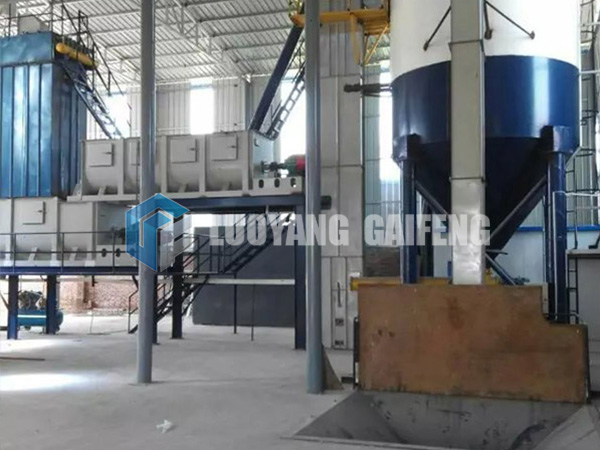High-end Calcium Oxide Production Line
- Advanced equipment: A high-end calcium oxide production line uses advanced equipment and technology, such as high-efficiency rotary kilns, modern cooling systems, and precise hydration systems, to produce high-quality calcium oxide with consistent properties.
- Quality control: Quality control is an important aspect of a high-end calcium oxide production line. The production process is carefully monitored and controlled to ensure that the final product meets the strict standards of various industries, such as steelmaking, paper manufacturing, and water treatment.
- Environmental sustainability: Many high-end calcium oxide production lines are designed with a focus on environmental sustainability. This includes the use of renewable energy sources, such as biomass or waste heat recovery, to power the production line, as well as the capture and reuse of carbon dioxide produced during the calcination process.
Calcium oxide, also known as quicklime, is an important compound used in various industrial applications such as steelmaking, papermaking and water treatment. A high-end calcium oxide production line is a complex industrial process that involves the use of advanced technology and equipment to produce high-quality calcium oxide with high efficiency and low environmental impact.
The high-end calcium oxide production line is specially designed and manufactured for the production of high activity and high purity calcium oxide. Heating methods can be selected: any method such as gas, coal, or electric heating.
The advantage of the equipment is that the calcium oxide roasting furnace and the heating and burning device are independently isolated from each other. The heat exchange between the two is only through heat conduction and heat radiation. Therefore, during the whole production process in which calcium carbonate is decomposed into calcium oxide, calcium oxide will not be exposed to pollution such as external air, gas or coal combustion.
This improves the purity of calcium oxide, which is only limited by the purity of the calcium carbonate raw material in theory. In the case of high-quality ore, the effective calcium oxide can reach more than 98%. Due to the rapid heating and rapid cooling methods. The highest calcium oxide activity can reach 450ml/4N-HCl.
The production line typically consists of several key stages
- Raw material preparation: The first stage of the process involves the preparation of the raw materials, usually limestone, which is the primary source of calcium oxide. The limestone is crushed and milled to a fine powder, and any impurities, such as clay or sand, are removed.
- Calcination: The next stage is calcination, where the limestone is heated in a rotary kiln to a high temperature of around 1000-1300°C. This causes the limestone to undergo a chemical reaction, producing calcium oxide and carbon dioxide as byproducts. The carbon dioxide is typically captured and used for other purposes, such as carbonation of soft drinks.
- Cooling: After calcination, the quicklime is cooled down in a vertical cooler, which is usually a multi-stage process where the hot quicklime is cooled by air or water. This is important to prevent further reaction of the calcium oxide with atmospheric moisture.
- Hydration: The final stage involves the hydration of the quicklime, where it is combined with water to produce calcium hydroxide, also known as slaked lime. The hydration process is exothermic, which means it produces heat, and the temperature of the slaked lime is carefully controlled to prevent overheating.
A high-end calcium oxide production line is a complex and sophisticated process that requires expertise in chemistry, engineering, and process control. The use of advanced technologies and equipment results in high-quality calcium oxide that meets the strict standards of various industries, while minimizing environmental impact and maximizing production efficiency.
A high-end calcium oxide production line includes advanced technologies and equipment, such as:
- Rotary kilns with advanced burner systems that allow for precise temperature control and maximize energy efficiency.
- Modern cooling systems that reduce energy consumption and minimize environmental impact.
- Hydration systems that utilize the latest technology to ensure precise control of temperature, pressure, and mixing, resulting in high-quality slaked lime with consistent properties.
- Advanced process control systems that use data analytics and machine learning algorithms to optimize the production process and minimize waste.




